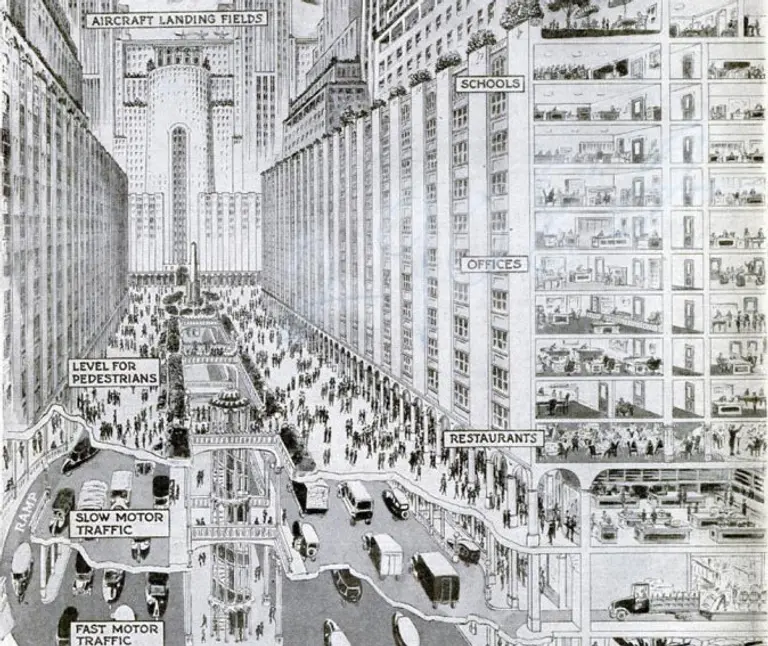August 20, 2015
1920s Popular Science Illustration Stacks the Future American City Like a Layered Cake
As the automobile became more widely available in the 1920s, the idea of living in the suburbs became far more appealing to Americans. Residents of large cities sought to escape increasingly crowded streets (thanks to industrialization), and with newly paved roads and auto ownership, taking on a commute was well worth the space and comfort that was paid out in return. While many urbanists and architects in the '20s predicted that suburban migrations would give way to sprawl (and it eventually did), other urban "futurists" balked at the idea of decentralization, and believed instead that Americans would be living and thriving in high-density vertical cities. Architect Harvey W. Corbett's “May Live to See, May Solve Congestion Problems” is one such proposal that sees everything from homes, offices, schools, green space and even aircraft landing fields stacked on top of each other for the ultimate metropolis.
Have a closer look at the complete plan here
Have a closer look at the complete plan here







